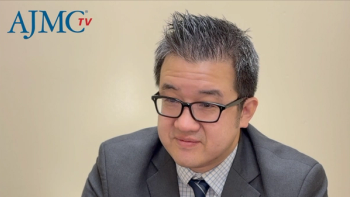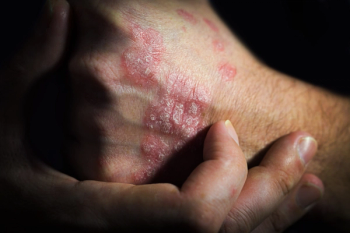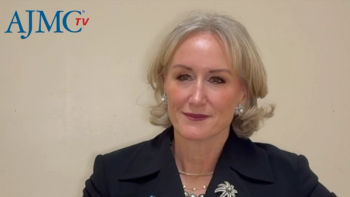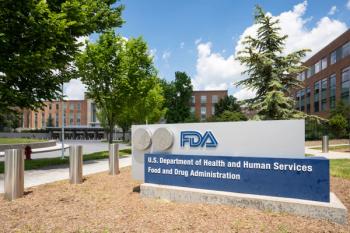
- July 2025
- Volume 31
- Issue Spec. No. 8
- Pages: SP527-SP528
Fixed-Duration SC Mosunetuzumab Shows 83% PFS at 1 Year in Untreated HTB Follicular Lymphoma

Subcutaneous mosunetuzumab shows promising efficacy and safety in high-tumor burden follicular lymphoma, paving the way for outpatient treatment options.
Patients with previously untreated high-tumor burden (HTB) follicular lymphoma (FL) showed promising results following treatment with a fixed-duration regimen of subcutaneous (SC) mosunetuzumab, according to data presented recently at the American Society of Clinical Oncology (ASCO) annual meeting.1
Interim results for patients in the
Safety results shared at ASCO 2025 were consistent with those seen in the trial of patients with R/R FL, with about one-third of patients experiencing cytokine release syndrome (CRS).1
Ian W. Flinn, MD, PhD, who is chief scientific officer for Tennessee Oncology and OneOncology, presented the interim data from
Mosunetuzumab is a bispecific CD20-directed CD3 T-cell engager (BiTE)
Interest in bringing bispecific therapies to more patients without requiring them to travel long distances has spurred advancement of SC and fixed-dose regimens. For example,
Methods. Because FL is a slow-growing lymphoma, guidelines sometimes recommend a “watch and wait” approach; however, early treatment is advised if patients have HTB, based on criteria established by the Groupe d'Etude des Lymphomes Folliculaires (French Study Group on Follicular Lymphoma), or GELF. Patients who qualified for the study met these criteria and had ECOG performance status of 0-2.1
Patients received SC mosunetuzumab in a step-up dosing schedule, which started at 5 mg and moved to 45 mg; patients received 45 mg on Day 1 of 21-day cycles for 17 cycles (1 year). Patients with a partial or complete metabolic response (CMR) after the 17th cycle could receive mosunetuzumab maintenance therapy, which was 45 mg every 8 weeks for up to 1 year.1
Corticosteroid prophylaxis was given to reduce the risk of CRS; this was mandatory in the first 2 cycles and optional thereafter.
Results. The primary end point was the progression-free survival (PFS) rate at 24 months. Key secondary end points included objective response rate (ORR) and time to response (TTR), as well as safety. Data showed the following:1
- 102 patients had enrolled as of May 29, 2024; 55 completed initial treatment (17 cycles), 31 had discontinued, with 19 due to progressive disease and 4 due to adverse events (AEs); 16 patients were continuing initial treatment.
- 42 patients received maintenance treatment, with maintenance ongoing in 38 patients.
- Median age was 65 years (range, 24–86 years); 52.0% of patients were female.
- Most patients had stage III/IV under criteria of the Ann Arbor staging system (91.2%) and a score of ≥2 (78.4%) on the Follicular Lymphoma International Prognostic Index (FLIPI).
- After a median follow-up of 13.9 months, the 12-month PFS rate was 82.8% (95% CI, 73.0–89.3); ORR was 87.3%.
- 60.8% of patients had a CMR; among the 89 patients with a response, the median TTR was 2.7 months (range, 1.2–5.8).
Safety. Common AEs seen in at least 30% of patients were injection-site reaction (57.8%), fatigue (42.2%), CRS (34.3%), headache (31.4%), and nausea (30.4%). Grade ≥3 AEs and serious AEs were reported in 44.1% and 29.4% of patients, respectively.
Most who experienced CRS had grade 1; about 5% of patients had grade 2. Serious adverse events (AEs) of CRS were seen in 10.8% of patients, with all resolved.
“These data support further exploration of mosunetuzumab SC in previously untreated FL, particularly in an outpatient setting, including in community and academic centers,” the authors wrote.1
References
- Flinn IW, Burke JM, Sharman JP, et al. Fixed duration subcutaneous (SC) mosunetuzumab (Mosun) in patients with previously untreated high-tumor burden follicular lymphoma (FL): Interim results from the phase II MorningSun study. J Clin Oncol. 2025;43(suppl 16): Abstract 7014.
https://doi.org/10.1200/JCO.2025.43.16_suppl.7014 - Barlett NL, Sehn LH, Assouline SE, et al. Subcutaneous mosunetuzumab leads to high rates of durable responses, low rates of cytokine release syndrome, and non-inferior exposure compared with intravenous administration in patients with relapsed/refractory follicular lymphoma: primary analysis of a pivotal phase II trial. Blood. 2024;144(suppl 1): Abstract 1645.
https://doi.org/10.1182/blood-2024-194612 - Burke JM, Flinn IW, Budde LE, et al. Fixed-duration subcutaneous mosunetuzumab is active and has a manageable safety profile in patients with previously untreated, low-tumor burden follicular lymphoma: Updated results from the phase II MorningSun Study. Blood. 2024;144 (suppl 1): Abstract 3008.
https://doi.org/10.1182/blood-2024-194604 - FDA D.I.S.C.O. Burst Edition: FDA approval of Lunsumio (mosunetuzumab-axgb) for adult patients with relapsed or refractory follicular lymphoma after two or more lines of systemic therapy. News release. FDA. Updated January 19, 2023. Accessed June 10, 2025.
https://bit.ly/3HxPxuh - FDA grants accelerated approval to epcoritamab-bysp for relapsed or refractory follicular lymphoma. News release. FDA. June 26, 2024. Accessed June 10, 2025.
https://tinyurl.com/dtu92zjh - GlobalData. ASH 2024: AstraZeneca set to take a BiTE out of follicular lymphoma market. Clinical Trials Arena. December 9, 2024. Accessed June 9, 2025.
https://www.clinicaltrialsarena.com/analyst-comment/ash-2024-astrazeneca-follicular-lymphoma/
Articles in this issue
Newsletter
Stay ahead of policy, cost, and value—subscribe to AJMC for expert insights at the intersection of clinical care and health economics.









































